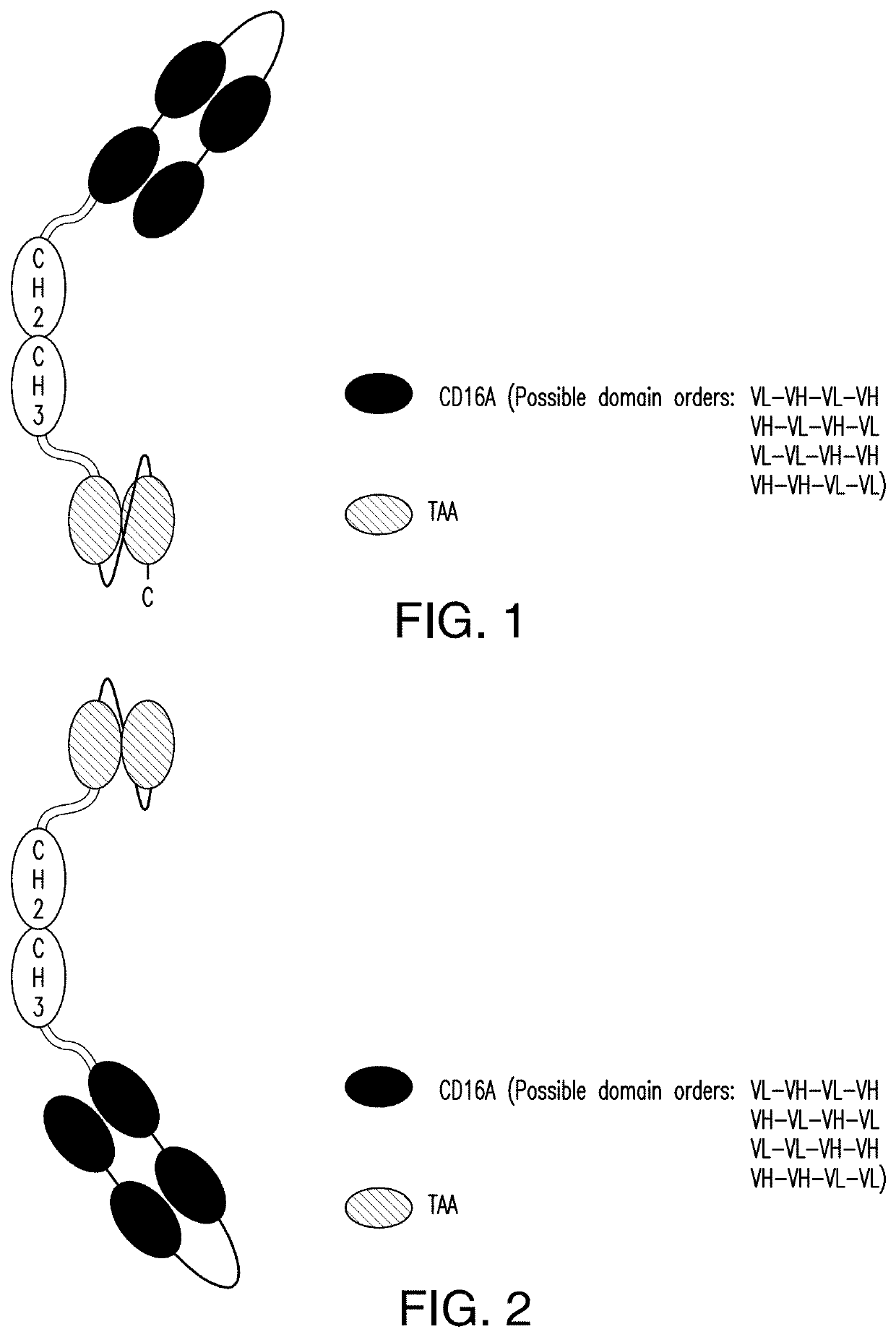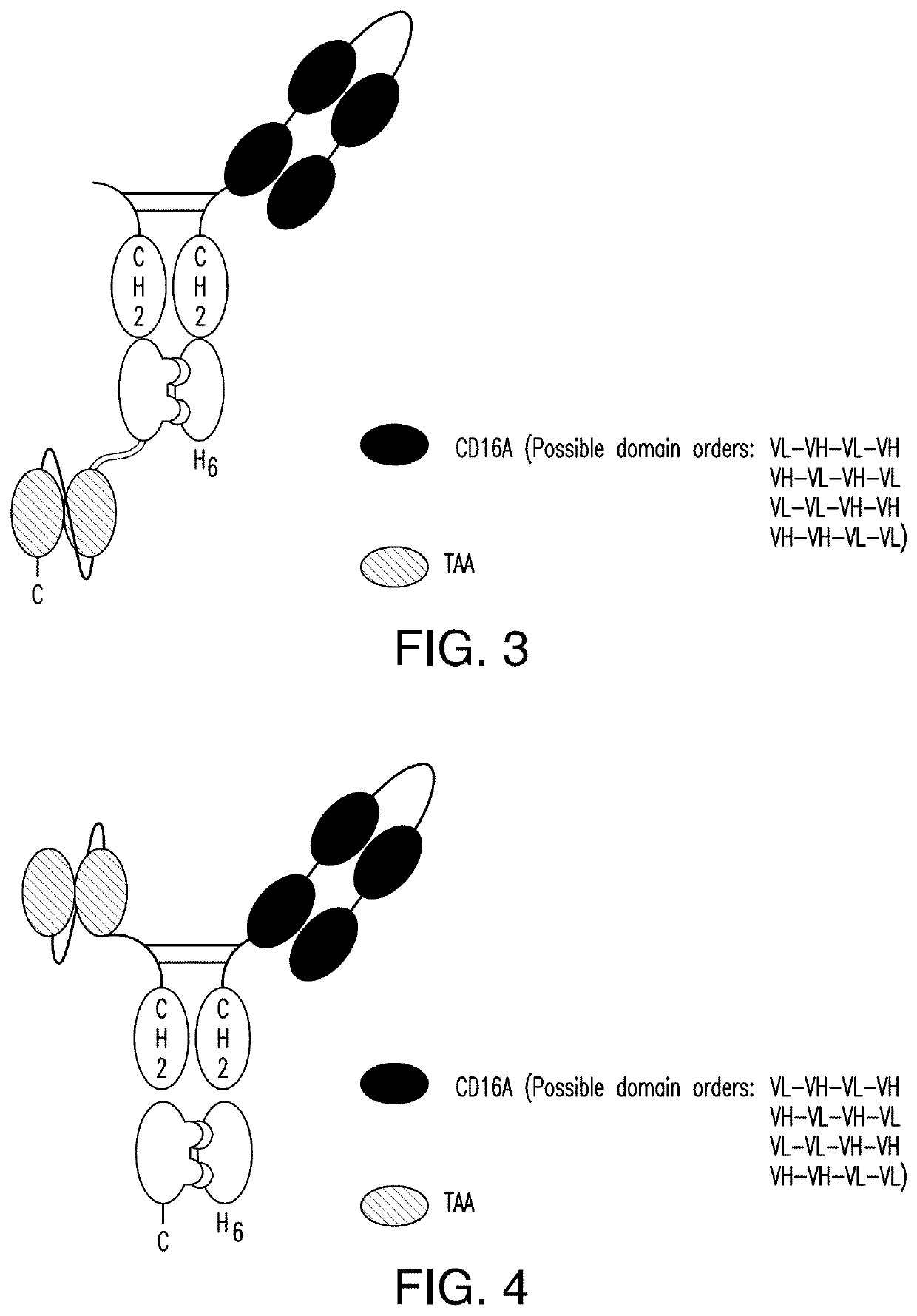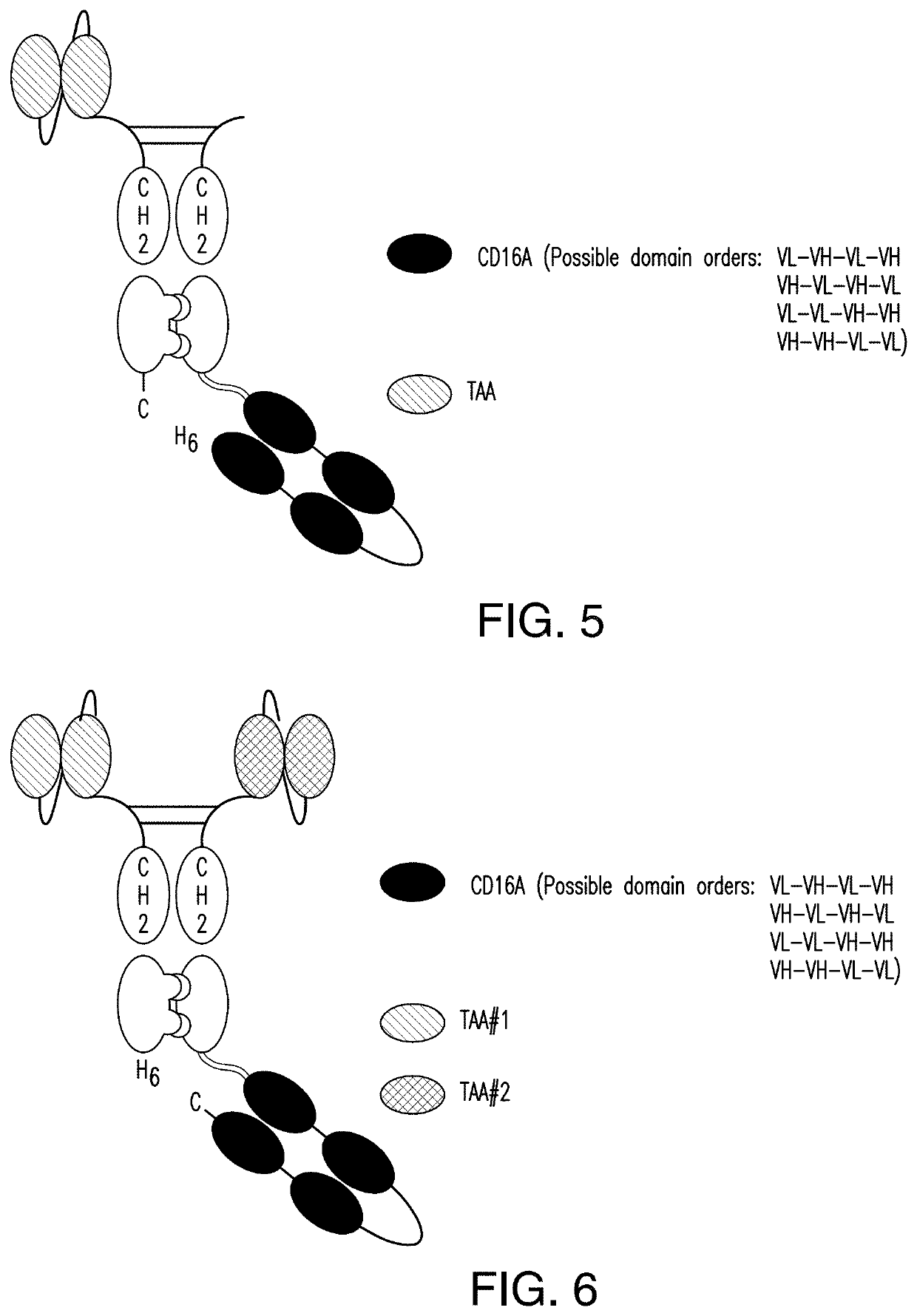Nk cell engaging antibody fusion constructs
a fusion construct and nk cell technology, applied in the field of multi-specific antigen binding proteins, can solve the problems of reducing the number of effector cells available to mediate adcc, unsatisfactory cellular stimulation, and expected to reduce the therapeutic efficacy so as to enhance the functionality of nk cell engagement, avoid additional binding, and prolong the serum half-life
- Summary
- Abstract
- Description
- Claims
- Application Information
AI Technical Summary
Benefits of technology
Problems solved by technology
Method used
Image
Examples
example 1
ion of a BCMA Antigen-Binding Moiety
[0376]For constructing the antigen-binding moieties antibody fragments with selective binding to a chosen target antigen can be isolated from a human antibody library by expression and display of single chain Fv domains (scFv) on filamentous fusion phage and enrichment of phage particles encoding scFv exhibiting target binding by panning on recombinant target antigen or target antigen-positive cells, as described, for example, in Smith GP (Science, 1985, 228: 1315-7) and Clackson et al. (Nature, 1991, 352: 624-8). To isolate BCMA-binding antibody fragments, recombinant human BCMA(1-54)-Fc, cynomolgus BCMA(1-53)-Fc and CHO cells stably expressing cell surface anchored human BCMA(1-54) or cynomolgus BCMA(1-53) fused to the transmembrane region and cytoplasmic domain of human CD3zeta can be used in subsequent panning rounds to enrich binding phage particles. For this, phage particles are incubated with recombinant Fc-fusion antigen in solution, e.g.,...
example 2
n of Different Antigen-Binding Protein Scaffolds
[0377]2.1 scDb-mFc (FIG. 1 and FIG. 2):
[0378]A scDb-mFc refers to an antigen-binding protein which is monomeric and comprises a bivalent CD16A antigen-binding moiety in the format of a scDb fused to a monomeric Fc portion. Either the scDb consisting of two CD16A antigen-binding moieties is fused to the N-terminus of the Fc portion which consists of a variant CH2-CH3 polypeptide and a scFv consisting of a single target antigen-binding moiety fused to the C-terminus of the Fc portion (FIG. 1) or the scDb consisting of two CD16A antigen-binding moieties is fused to the C-terminus of the Fc portion which consists of a variant CH2-CH3 polypeptide and a scFv consisting of a single target antigen-binding moiety fused to the N-terminus of the Fc portion (FIG. 2).
[0379]For expression of the scDb-mFc antigen binding protein in CHO cells, coding sequence of the molecule was cloned into the mammalian expression vector system. In brief, gene sequen...
example 3
n of NK Cell Engager Antibody Formats using Stable CHO Cell Pools
[0426]Host Cell culture
[0427]Flp-In CHO cells (Life Technologies), a derivative of CHO-K1 Chinese Hamster ovary cells (ATCC, CCL-61) (Kao and Puck, 1968), were cultured in Ham's F-12 Nutrient Mix supplemented with L-Glutamine, 10% FCS and 100 μg / ml Zeocin. Adherent cells were detached with 0.25 Trypsin-EDTA and subcultured according to standard cell culture protocols provided by Life Technologies.
[0428]For adaptation to growth in suspension, cells were detached from tissue culture flasks and placed in serum-free HyClone CDM4 CHO medium for subsequent incubation in shake flasks at 37° C., 5% CO2 and 120 rpm. The standard medium for the culture of suspension-adapted Flp-In CHO Host cells was HyClone CDM4 CHO supplemented with L-Glutamine, HT Supplement, Penicillin / Streptomycin and 100 μg / ml Zeocin. Suspension-adapted cells were cryopreserved in medium with 10% DMSO and tested negative for Mycoplasma using MycoAlert Mycop...
PUM
| Property | Measurement | Unit |
|---|---|---|
| Fraction | aaaaa | aaaaa |
| Molar density | aaaaa | aaaaa |
| Molar density | aaaaa | aaaaa |
Abstract
Description
Claims
Application Information
 Login to View More
Login to View More - R&D
- Intellectual Property
- Life Sciences
- Materials
- Tech Scout
- Unparalleled Data Quality
- Higher Quality Content
- 60% Fewer Hallucinations
Browse by: Latest US Patents, China's latest patents, Technical Efficacy Thesaurus, Application Domain, Technology Topic, Popular Technical Reports.
© 2025 PatSnap. All rights reserved.Legal|Privacy policy|Modern Slavery Act Transparency Statement|Sitemap|About US| Contact US: help@patsnap.com



